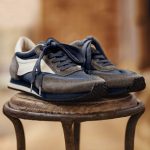
Photography involves much more than just picking up a camera and taking a clear shot. Think of photography as an art. As an art, there are many different techniques that you can learn to improve your photography. Each of these techniques requires strict attention to detail and a sense of what will make a unique and interesting photograph. Here are some suggestions that can help you out.
One effective way to improve your photography skills is to draw inspiration from other photographers. When you spend time looking at other photographers’ work, you will be able to see many different ways to capture an image.
A good tip you can use when shooting photographs is to practice using digital techniques. With the right techniques, you can make your photos look like classic works of art. There are various image editing software for digital photos, but the program Adobe Photoshop, is pretty much the industry standard. Some of these programs are more complicated than others, but the filter function is how you can convert your photos to art-like quality. Tinker around here and find filters you like.
Capture the smaller things when traveling with your camera. A picture snapped without any particular motive may become important to you later by stimulating your memories and helping you call back the ambiance of your trip. Shoot pictures of small objects like tickets and coins and also larger things like street signs and strange objects in markets.
Be mindful of which and how many objects appear in your photos. Great pictures are like tiny windows highlighting specific things about your subject. Don’t attempt to include too much. Try taking a series of photos for a better impression of a subject than one without details and focus.
When photographing your subject, try to get as close as you can. Terribly far away shots prevent the viewer from seeing clear colors and details. Make it easy for your viewers and you to see the subject vividly and clearly.
Lots of people believe that taking pictures in bright sunshine creates the best images. However, this isn’t the case, because direct sunlight can ruin almost all photographs. The sun will cast awkward shadows along with glaring, and cause uneven highlights that will make your subjects squint when they look into the camera. If you can, take your pictures in the early morning hours, or in the late evening if you are taking photos outside.
Find the right subject to photograph. It doesn’t matter how skilled you are, or how great your equipment is, you need a great subject to photograph. Seek a professional model or an aspiring model to pose for you, or seek interesting faces on the street for impromptu shots.
Use care when packing your photography equipment in trip preparation. Bring all lenses that you think you will possibly use, plus a few extra batteries and cleaning tools. Don’t forget to keep in mind any limitations you have regarding space, and do not pack more equipment than you think you will need.
By focusing your camera before taking the actual picture and then switching the angle or moving to the side, it will cause the subject to no longer be the central point in your photo. Centering is generally expected and not that interesting in a photo. Try to place your subject to one side to be more interesting.
When setting up for a shot, keep in mind that less, often times, is more in photography. Cluttering your shots with too many elements is unnecessary. There is something special about keeping your photographs simple.
Set limitations, and this will help you make your photographs more creative. If you only take photos of that kind of thing that day, you will be more focused and creative. One way to improve technique in photography is to photograph the same object or scene over and over again. By using limitations to your advantage, you’ll be forced to think more creatively, resulting in interesting and unusual pictures.
When going somewhere new, get an idea of what things you ought to be taking pictures of. To get some good ideas on where to begin, head on over to the closest postcard rack. The postcards will show images of places and subjects that people would like to see and would be a welcome addition to your portfolio.
Usually the subject will be looking directly at the camera. For some unique pictures, try to have your subject look off the camera, have them focus on something outside the field of view of the camera. Another idea is to tell your subject to concentrate on something or someone in the frame of the shot, without looking directly at the camera.
Are you looking for that perfect photo that requires your subjects to have raindrops on them? Create the effect yourself by carrying along your own spray bottle and gently misting some “rain” on the subject that you need to photograph.
Although counter-intuitive, wearing white in a photograph is actually a terrible idea. The majority of cameras work on an automatic focus, and therefore the equipment will attempt to read the shades and colors within the shot’s range. This leaves white clothing looking too bright and washed out!
Though you might feel tempted to use the lowest setting on your digital camera, make sure you understand the consequences of your action. The only time to use lower settings is when you know the images will only be displayed on your computer screen.
Have you ever had to take pictures of subjects that had been in the rain? Carry a spray bottle full of water and mist your subject, creating “rain” droplets to complete your shot.
Silhouettes are unique pictures. While most people use the sunset to create a silhouette, there are other methods. For example, if the subject is not as brightly lit as the background, you can produce a silhouette. You can establish artificial light in the background or position your subject before a source of light, such as a window, if you want to create a silhouette image. Occasionally, this type of shot might have a face or body outline that is less than flattering.

Have your settings already done so you don’t miss a great photo opportunity. After saying this, you also do not want to use a preset, which will allow your camera to pick all the settings for you. Know your options, and choose a setting that lets you switch certain elements you wish to control.
To create images that stand out from the ordinary, try photographing from different viewpoints. Head-on shots are common; anyone can shoot those kinds of pictures. Consider getting high up to look down at your subjects, or get down and look up to take a picture of them. You might also find that angled or side shots create a distinctive photographic experience.
Buying quality equipment is a must if you plan on doing photography for any substantial amount of time. Many professionals prefer name brands, but there are a few other manufacturers that also provide great results.
Shutter Speed
Relative sharpness is another important element to consider. As a rule, this sharply focused part of the photographic image will be in its center. The focus becomes less sharp on areas outside of the middle of the frame.
Be creative with shutter speeds. While a fast shutter speed is the norm, imagine the possibilities of taking pictures with a slower shutter speed. For example, consider the cyclist as he rushes by you. If implemented correctly, you can end up with an image where the backdrop is blurred while the cyclist remains in focus, indicating the speed at which he propelled himself.
If you want higher-quality pictures, get a tripod. Your tripod needn’t be expensive or fancy. The small movement that comes from holding a camera in your hands as you take a picture can show up in your photos, especially in the situation of trying to capture fast action or when you’re using a longer shutter speed. An inexpensive tripod will help you prevent any blurring of your subject. A quality tripod allows your pictures to look much more professional.
Your photos will have more appeal with one or two interesting details in the foreground. A simple addition to any photo really adds an additional view sometimes. This will allow viewers to notice the entire scope of your picture.
Try to be close and personal. When framing your shot, zoom in or move closer to the subject of your shot. Make sure that your subject fills the frame. Too much background, no matter how scenic, can detract from the focus of the image. Details also become more visible and engaging when subjects are closer.
Make sure that your camera is adjusted correctly whenever you are taking pictures of fast moving objects. Increase your shutter speed to get better shots. This will get you better and clearer shots of faster moving subjects.
Don’t purchase a camera that needs lithium batteries if you plan on traveling with it. You cannot travel with batteries in your luggage because they can overheat, and cause a fire. However, if you are taking your camera on-board with you, it is allowable to do so when the batteries are inserted into the camera.
To add power to your photo subject, get down low and point your camera upwards. To make the subject appear weaker, shoot it from someplace up high, looking downward. Experimenting with these techniques will allow you to better understand how to execute them more effectively.
For the white balance setting on your camera, set it yourself. Many people use their cameras with the auto settings on, and the camera will adjust the white balance to the setting it thinks is correct, even though it might not look the best. You can alter this setting to remove yellowness from bad lighting, or to change the mood of your picture.
Photographing the head is not desirable. Squatting down at the child’s level will give you better results. It’s a simple trick which goes a long way.
Pictures that you take in a low light situation tend to turn out very blurry. A steady hand is crucial to getting a good low light shot. Consider taking the shot from a level that allows you to put the camera down. Ideally, however, you should invest in a tripod.
Learn when it’s okay and not okay to use the flash with your camera. Avoid leaving the flash on and forgetting to adjust your settings. Sometimes, too much light spoils a great photo. At other times, low light makes a flash necessary. So don’t forget to use it when you need it.
A lot of amateur photographers do not believe that a flash is necessary for a great picture, but you would do well to reconsider this stance. A bright light can create interesting shadows. If unwanted shadows occur, turn on your fill flash setting if your camera has one. This will help you capture fine details in faces, including skin folds.
By reading this article you now understand that photography is much more than taking technically correct, well-lit pictures. The quality inherent in your images will be greatly improved if you take the time to apply what you have learned.
If you wish to take really good pictures, it is important that you are familiar with your camera. Do some research on your camera, and learn it well.










